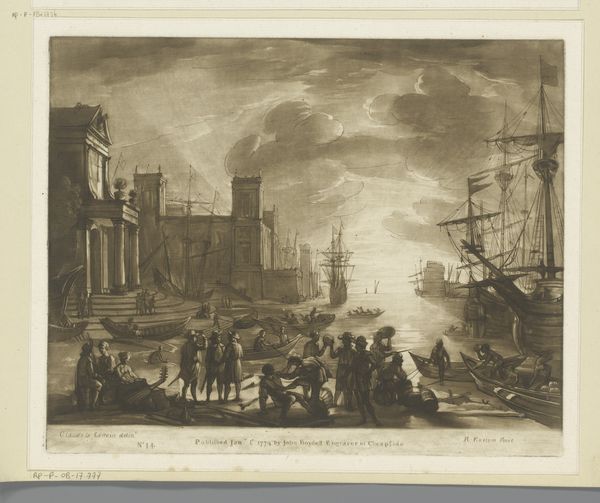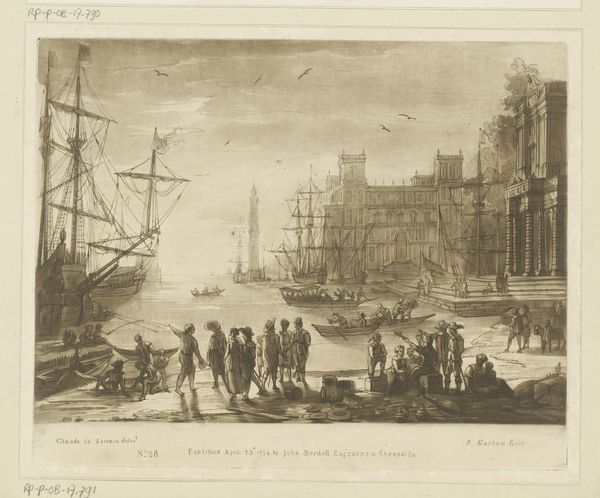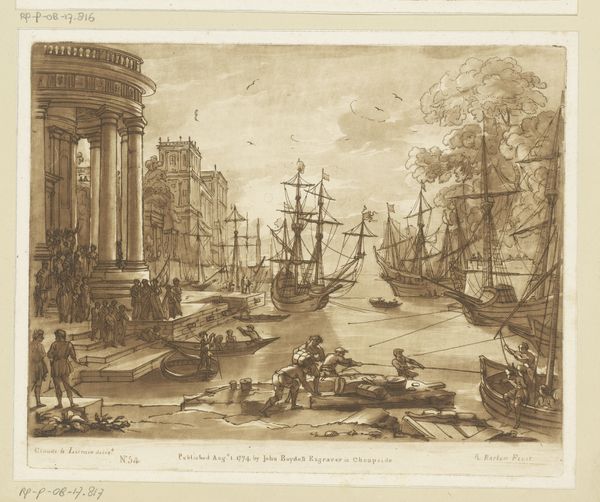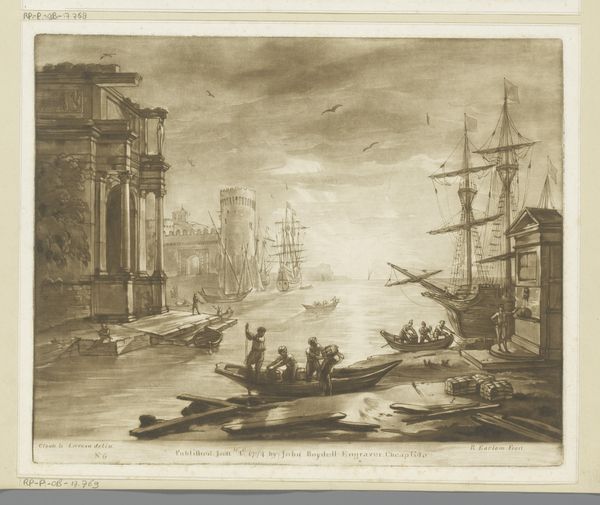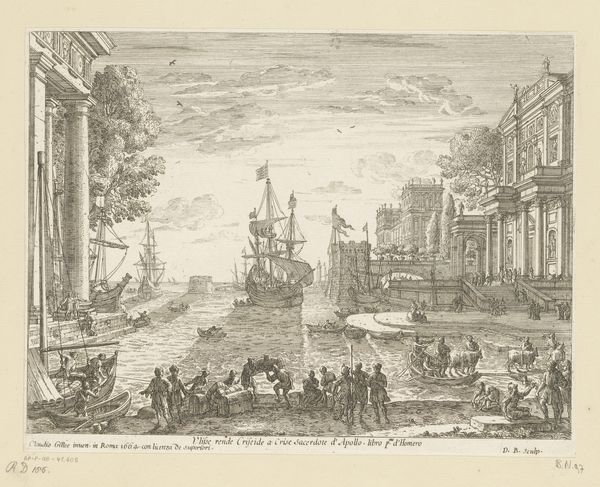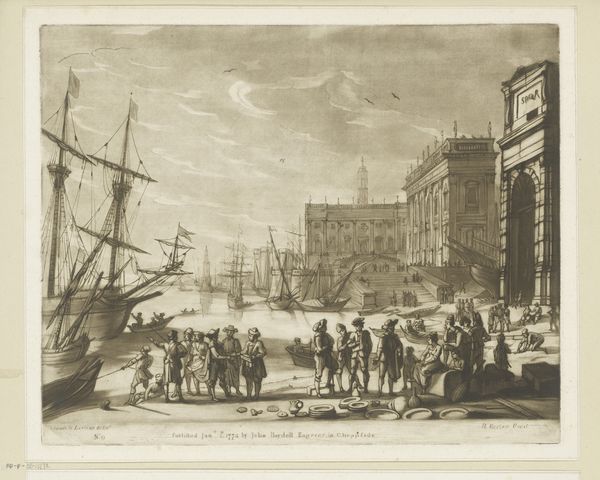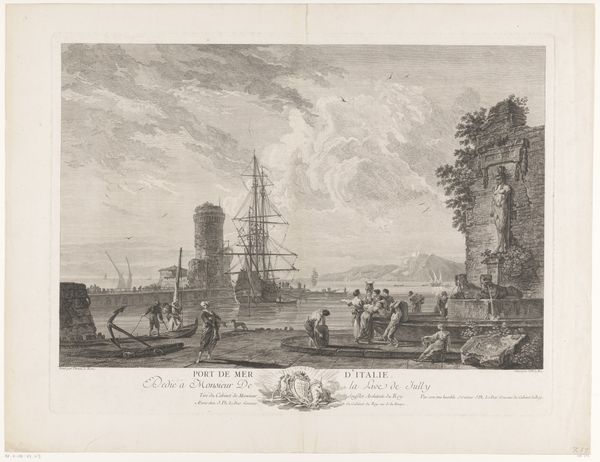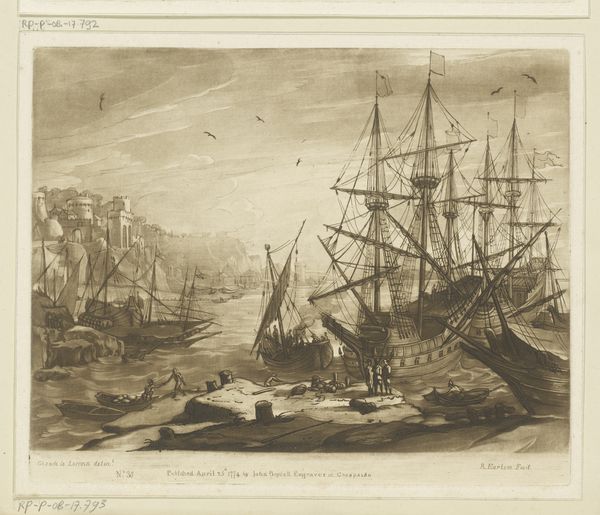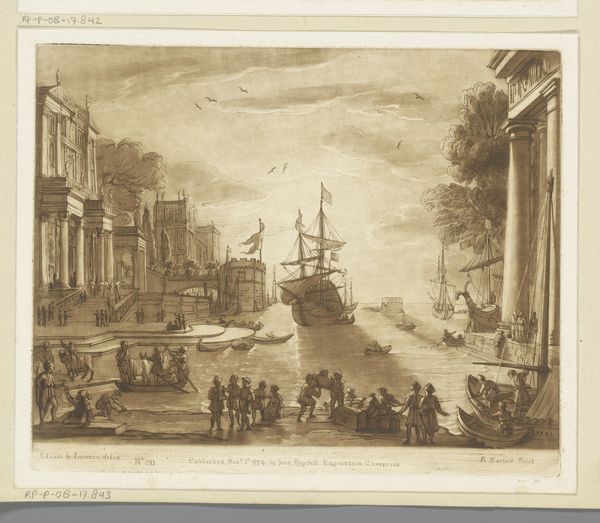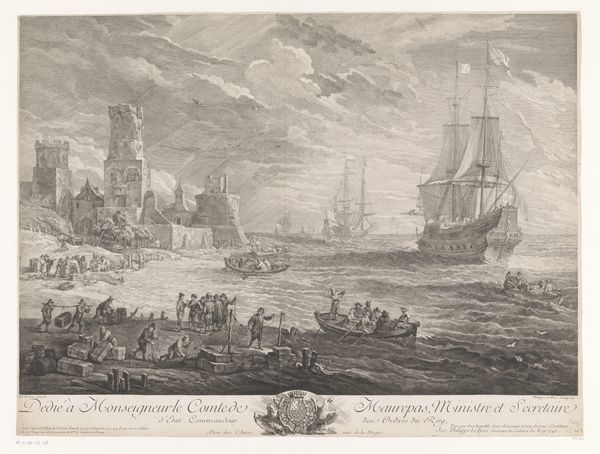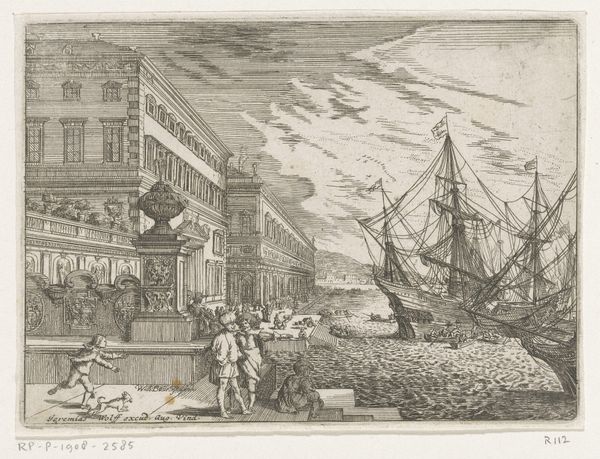
print, engraving
#
baroque
# print
#
old engraving style
#
landscape
#
cityscape
#
history-painting
#
engraving
Dimensions: height 496 mm, width 634 mm
Copyright: Rijks Museum: Open Domain
Curator: Here we have Jacques Philippe Le Bas's "Gezicht op de oude haven van Messina," dating from the period 1717 to 1783. It's an engraving, currently held at the Rijksmuseum. Editor: Immediately, the delicate lines and tonal range create such a melancholic atmosphere. There is a certain elegance and sophistication within its design, I believe. The use of linear perspective and atmospheric perspective help define a composition with strong spatial clarity. Curator: Indeed. And beyond that initial aesthetic appeal, it's crucial to recognize the broader historical narratives woven into cityscapes like these. Consider the port itself—a site of trade, migration, and colonial encounters. Messina was a crossroads, experiencing power dynamics between different empires. Editor: A crossroads elegantly rendered. Notice how the artist uses the vertical elements, such as ships' masts and architectural features to direct the eye, creating a balanced composition of lines and forms? Curator: I agree. What is really fascinating here is thinking about how this image, originally meant to be shared as a print, probably did shape and reflect societal attitudes towards distant lands and maritime dominance at the time. Images helped to inform and control perceptions about others. The sea connects different worlds and colonial practices. Editor: An incisive point, although it could equally be claimed the image attempts to reveal essential harmony. In particular, I'm referring to how the eye rests near the centre as all vectors pull inwards to define that perfect tonal point on the horizon. Curator: But whose harmony was this narrative serving? By closely studying images like these, we begin to unravel the ideologies and biases inherent in their visual language and we can try and consider subaltern voices. Editor: Undoubtedly this artwork offers multiple interpretations to encourage discussion on perception, ideology, power dynamics, colonial power, and narrative. Thank you for your time. Curator: Yes, indeed. Viewing historical images via different methodologies can expose hidden truths within our society. Thank you.
Comments
No comments
Be the first to comment and join the conversation on the ultimate creative platform.
